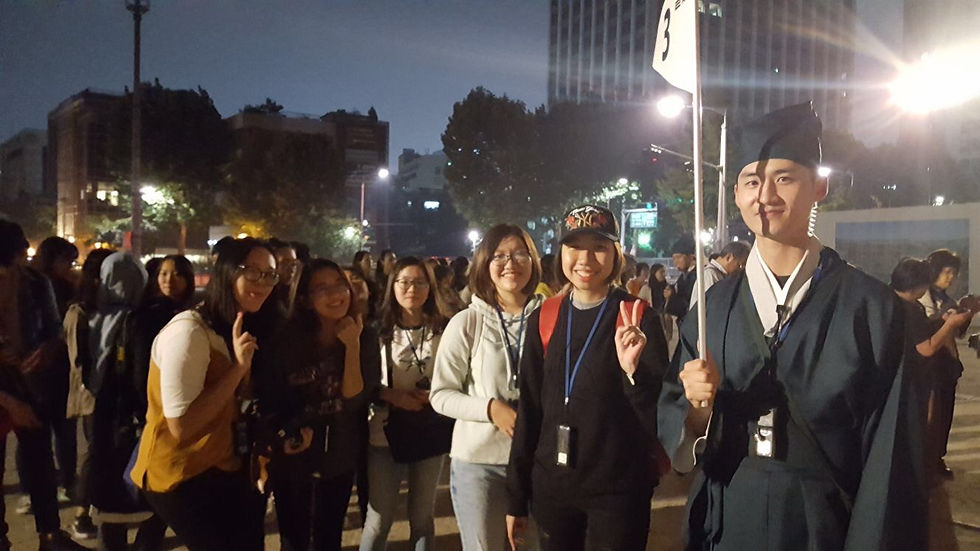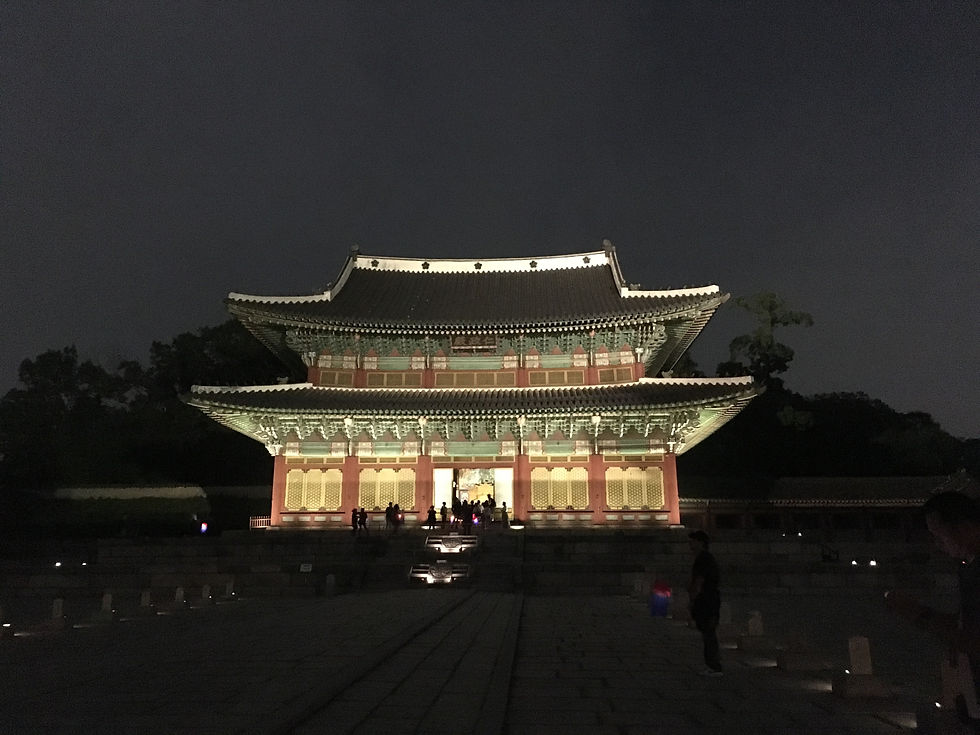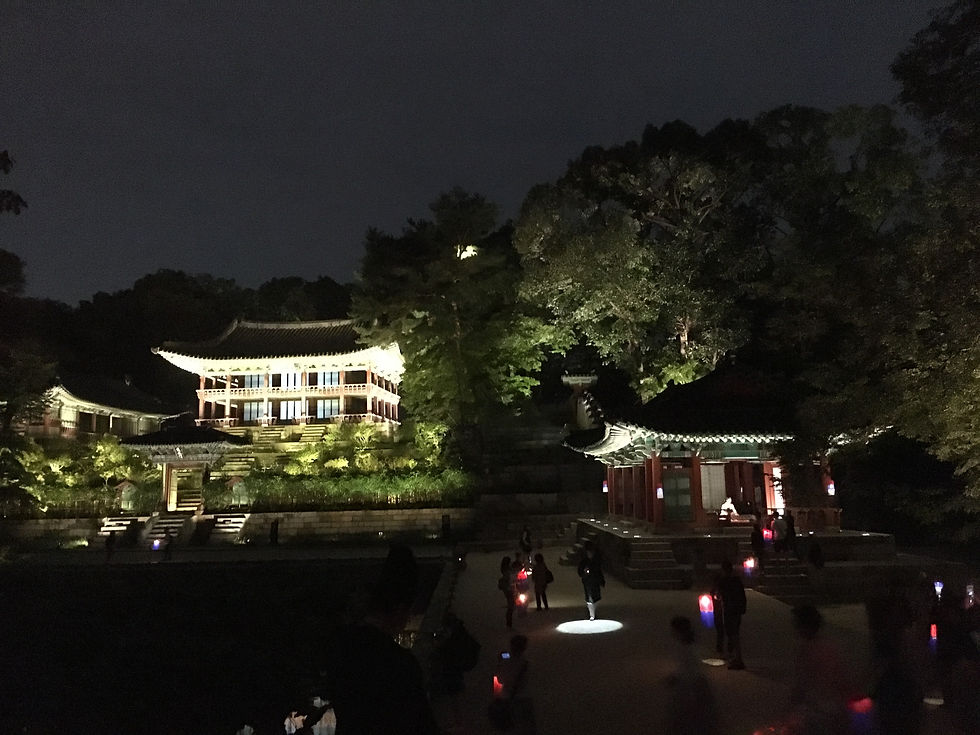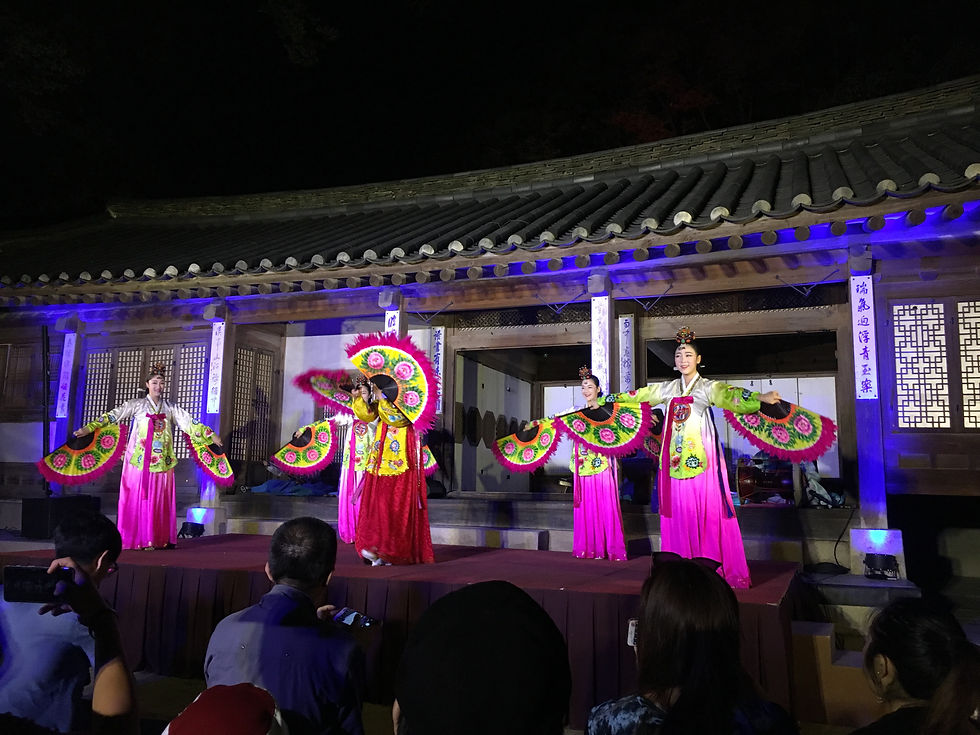- ODAO

- Nov 5, 2017
- 3 min read
Changdeokgung Palace is a UNESCO World Heritage Site from the Joseon Dynasty founded in 1392 to 1910. It is also known as Donggwol, the Eastern Palace as it is located east of Gyeongbokgung Palace.

Every year, the Changdeokgung Palace holds night tours during two periods. First during June-August and second during August-November. This is an exclusive tour as tickets are usually sold out fast every year and their tours are very limited as well. It is open for Koreans on every Thursday, Friday and Saturday nights while foreigners only can visit on Sunday nights at 8pm-10pm. Each night, only 100 people are allowed to attend. The moonlight tour is a guided tour so don't be worried about the language barrier as foreigners will be given special tours which are available in English, Japanese and Chinese.

When we arrived, we were divided to form smaller groups for the tour. It was a cooling night as we waited outside the palace entrance for the tour to start. We were given time to have a photo session with the palace guards on duty and get ready as the tour guide handed out headsets to listen to the guided tour.



Finally, the tour commenced as the palace guards did a mini performance that signified the opening of the tour. As we entered the gates, we were given hand-held lanterns so we can see in the dimly lit palace. Once I was in the palace grounds, I felt like as if I was transported to the past. It was as if the palace doors separated the modern and tradition world while the palace walls hid us away from reality.

We were brought to the heart of the palace, the Injeongjeon Hall, which was the Venue for Royal Ceremonies. We got to see the King's throne and the famous folding screen called Ilwoloakdo byeongpung, embroidered with the sun, moon, and five mountain peaks.


Then, we were brought to see the King's quarters where we heard light flute music playing. At first, we thought it was just music played from speakers but it was actually a real person playing it! He sat in the Sangnyangjeong pavilion and gave a non-stop flute performance for all the visitors, which was really applaudable.

As the pavilion is located at the top of a hill, we could see from afar NamSan Tower and buildings from the modern world. Having the thought of needing to return back to reality after the tour ends made me wish that the night would never end, but I guess we can only look forward to the future.

Next, we took a long walk in the dimly lit palace grounds to reach the Buyongji and Aeryeonji Pond, also known as The Majestic Royal Backyard. There, we saw another performance of a lady playing a gayageum, which is something like the Chinese guzheng. We enjoyed the music while having a short rest before heading to our last stop of the night.


Lastly, we headed to Yeongyeongdang Pavilion, where performances were held in the past. We were treated with traditional Korean beverages and snacks while watching the last performance of the night which lasted for a good 30-40minutes. We were entertained by traditional dance, musical and singing performances under the breezy Korean night sky.



Personally, I felt that the Moonlight tour at Changdeokgung Palace was the most memorable experience I had in Korea. It is really a once in a lifetime experience that I will never forget. Walking the palace grounds in the quiet night is really different as compared to daytime, where you can fully immerse yourself into the world of the past. Words and pictures are not enough to describe the rich-cultured experience. Tickets are priced at 30,000won, so be sure to try it at least once in your life! It is really an unforgettable experience! I will definitely be back again next time! See you again Changdeokgung Palace!

(More info about the tour can be found here: http://english.visitkorea.or.kr/enu/ATR/SI_EN_3_6.jsp?cid=1087481)
Written by Andrea Ng as ODAO.



